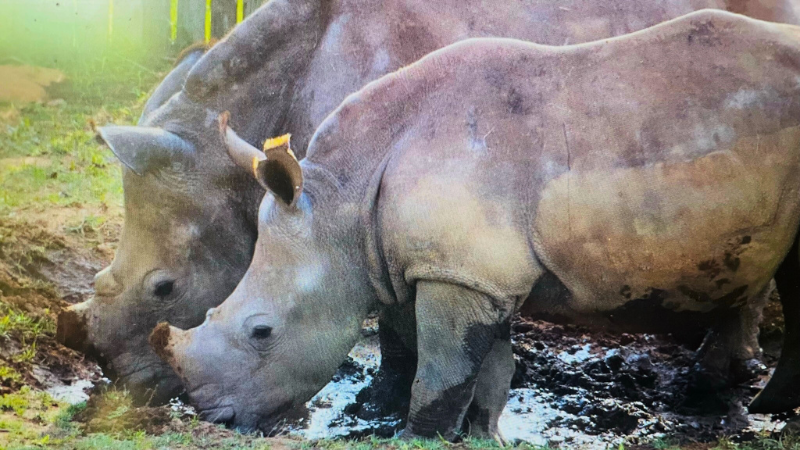Celebrating International Rhino Day: A commitment to conservation
International Rhino Day (22 September) is the perfect time to reflect on these magnificent creatures that have roamed the Earth for millions of years. Rhinos are not only one of the most iconic animals on the planet, but they are also among the most endangered, with all five species at risk of extinction. This day serves as a reminder of the importance of rhino conservation and the ongoing efforts to protect these incredible animals. At STS, we are proud to be part of this vital mission.
Fascinating facts about Rhinos
Rhinos are truly unique creatures, and here are some interesting facts that highlight their significance:
- Ancient giants: Rhinos have been around for over 50 million years, evolving from ancient ancestors that were much smaller than today’s species.
- Five species: There are five species of rhinos: White, Black, Indian, Javan, and Sumatran. The White Rhino is the largest, while the Javan Rhino is the rarest, with fewer than 80 individuals left in the wild.
- Impressive size: Rhinos are among the largest land mammals, with White Rhinos weighing up to 2,300 kilograms. Despite their size, they can run at speeds of up to 50 km per hour.
- Thick skin, sensitive nature: Rhino skin can be up to 5 centimetres thick, but it’s sensitive to sunburn and insect bites, which is why rhinos love to bathe in mud—it provides a protective layer.
- Horn of controversy: Rhino horns are made of keratin, the same substance as human hair and nails. Unfortunately, the demand for rhino horns for traditional medicine has led to a devastating poaching crisis.
STS's commitment to conservation
At STS, we recognise the critical need for Rhino conservation, and we are dedicated to making a difference. A few years ago, in collaboration with our partner Bright Light, we donated solar panels to the Care for Wild Rhino sanctuary, the world’s largest orphaned Rhino sanctuary. This donation not only provided a sustainable energy solution for the sanctuary but also reinforced our commitment to environmental stewardship and wildlife protection.
READ: Empowering conservation: efficient energy system sponsorship energises Care for Wild’s mission
Care for Wild is at the forefront of Rhino conservation, rescuing and rehabilitating orphaned Rhinos that have fallen victim to poaching. The sanctuary provides a safe haven for these vulnerable animals, giving them the care and protection they need to eventually return to the wild.
But our commitment didn’t stop with the solar panels. At STS, we believe in getting personally involved in conservation efforts. That’s why our team regularly volunteers at Care for Wild, donating their time and skills to help care for these majestic animals. From assisting with feeding and medical care to helping with the day-to-day operations of the sanctuary, our team is hands-on in making a real difference.
The importance of Rhino conservation
Rhinos play a crucial role in their ecosystems. As large herbivores, they help shape the landscape, which in turn supports other species. For example, by grazing on grasses, Rhinos maintain open spaces in savannas, allowing other animals to thrive. Losing Rhinos would have a ripple effect, disrupting entire ecosystems and the biodiversity they support.
Moreover, Rhinos are part of our global heritage. They have inspired countless cultures, symbolising strength and resilience. Protecting them is not just about saving a species—it’s about preserving the natural world for future generations.
Join us in making a difference
This International Rhino Day, we encourage everyone to take a moment to appreciate these incredible animals and consider how we can all contribute to their survival. Whether it’s through supporting conservation organisations, spreading awareness, or making environmentally conscious choices, every effort counts.
At STS, we remain committed to the fight against Rhino poaching and the broader cause of wildlife conservation. We are proud to stand with organisations like Care for Wild in their tireless efforts to protect rhinos and ensure that these ancient giants continue to roam the Earth for generations to come.





